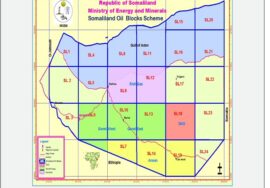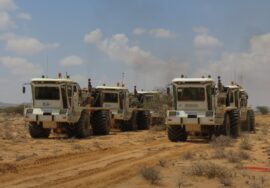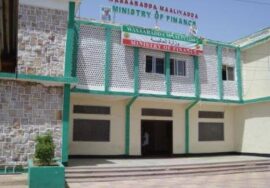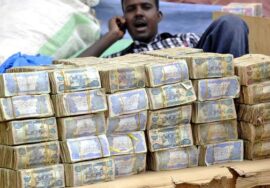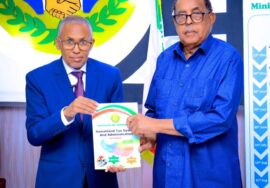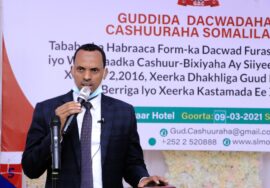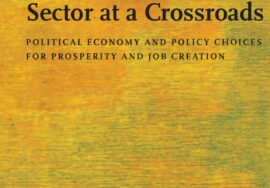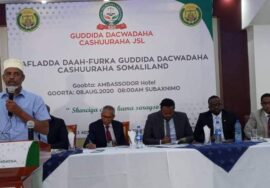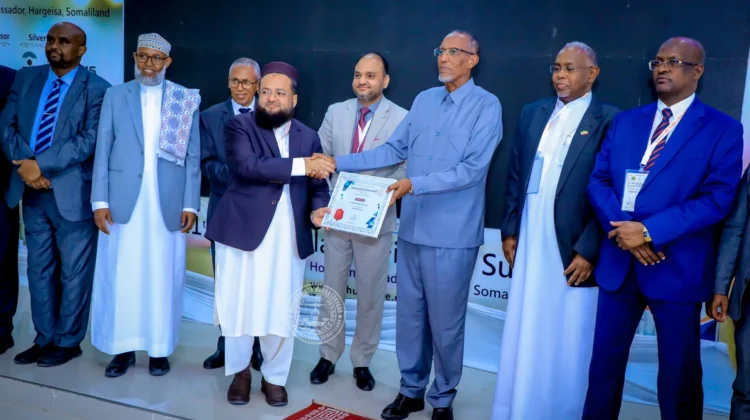
Islamic Microfinance System in Somaliland
Islamic Microfinance System and Poverty Alleviation in Somaliland
Poverty prevalence dates back to the existence of human being and today it has occupied foremost place on human development agendas of virtually all countries of the world. In the Republic of Somaliland it has been a main challenge since the restoration of independence in 1991 and its alleviation is in the first pillar of the National Development achieve MDGs by 2015 to fight poverty and improve the standard of living of underprivileged population. Nonetheless, actual achievements are still limited.
Islamic Microfinance which involves -compliant way of financing and providing credit without collateral or any property for guarantee to the marginally poor (too poor to have access to banks) for their business, is one of the most popular tools employed as part of a poverty reduction strategy, empowering and increasing the productivity of poor, giving social benefits to them in a sustainable way, and aiding economic development. However, in Somaliland it still remains fairly the same effect over the years due to misconceptions incompliance, the institutions lagging behind and the like.
This study determined the role of the Islamic microfinance in poverty alleviation efforts in Somaliland and how this role can be enhanced. It was intended to establish and recommend Islamic microfinance and its principles that could raise poverty reduction and economic development in the country. This was in view of the fact that conventional microfinance that charges the prohibited interest cannot be used by and for the Somaliland population which are 100% Muslims.
The study was conducted through descriptive survey research design; data was collected in April 2012 to June 2012, using questionnaire, interview and document review techniques from two Islamic Financial Institutions of Kaaba Microfinance Institution and Salaam Financial Services, data was analyzed using descriptive quantitative methods and presented in tables and figures.
The paper finds that the two institutions have envisaged, as their prime objectives, to serve to the vulnerable poor and to have positive impact on their incomes. However, it concludes that the institutions partially address in practice the issue of financial exclusion of the poor. They do not tap the wide variety of financial products and services which comply with Islamic law for the benefit of their clients particularly the hardcore poor and limited attention is paid to targeting the poor with their needs of financial services and products.
This research recommends that the government should establish an enabling framework for the institutions providing Islamic microfinance, and K-MFI and Salaam Financial Services should intensify their contribution to poverty alleviation by incorporating new pro-poor financial development policies and by expanding their financial activities into rural areas. Donor agencies including UN and other INGOs to make their income- generating activities in line with and comply with national policies in improving the standard of living of the poor people.
INTRODUCTION
1.1 Background of the Study
Allah (SWT) is the sole creator of this vast universe and whatever it contains. He created man as a master piece of His creation and elevated him to be His Khalifa on earth. He made all physical systems and other creations to cater human needs from the time immemorial. It is an Islamic value that every citizen in the Muslim countries is required not only to take into account the enhancement of Ummah ng but also to make necessary arrangements for the satisfaction of his material needs through efficient utilisation of resources and equitable distribution of goods and services and also to fully protect them from all kinds of fear besides the fear of poverty and starvation.
Fighting poverty is the responsibility of individuals, governments, and related organizations. Islamic economic system lays the principles of poverty elimination and there is plenty evidence in Quran, Sunnah, and practice of Khalifs to provide food, social security as well as access to finance to each and every individual in an Islamic economy. Pointing to this fact, an Ayah of Quran enjoying upon Quraish to worship Allah because He has protected them both from starvation and fear by granting them food and peace1. Similarly a Hadith says that a society where a Muslim has to starve is forsaken by Allah2. The first four Khalifs were fully conscious of their obligation towards meeting the needs of poor. Umar Ibn Khadab (RA) declared, a camel dies at the bank of Euphrates, I am
The overwhelming stress on satisfaction of basic needs and social security both of current and future generations leaves no justification for the prevalence of widespread poverty in Islamic framework. As a matter of fact, Islam and absolute poverty cannot persist together because Islam is a viable system that can respond and consequently eliminate poverty through its socioeconomic, cultural and political mechanisms and principles.
A really shameful situation emerges when abovementioned Islamic commitment is put next to along with pervasive poverty in Muslim world comprising of over a billion people and with impressive energy reserves like oil supplies but still faces crippling levels of poverty and increasing inequalities between haves and have-nots.
In recent years microfinance has emerged as an important instrument to relieve poverty in the developing countries. Today there are more than 7000 micro lending institutions providing loans to more than 25 million poor individuals across the world.4 Professor Mohammad Yunus, the founder of Grameen Bank in Bangladesh and the originator of the concept of microfinance, believes that 5% o year. So the success of microfinance institutions (MFIs) in Asia such as the Grameen bank, has led to the rapid expansion of similar programs in all over the world.
The role of Islamic values and principles were well documented theoretically but not empirically. Today many researchers have shifted their focuses on understanding the complex dynamic of poverty alleviation towards Islamic point of view. Since their inception in the mid 1975s, Islamic Financial Institutions (IFIs) have considered poverty alleviation as one of their major areas of interest. However these successes lead to the new and emerging approach which is introducing interest-free microfinance (Islamic Microfinance). Since the fact is Microfinance can only success in every Muslim country if it is -compliant. As in Islam, charging interest (Riba) is prohibited because by Islamic teachings, money is not an asset for earning profit and thus interest cannot be used by and for the Muslims.
In Somaliland, Kaaba Microfinance Institution (K-MFI) and Salaam Financial Services have actually been able to reach the economically active poor with their financial services in both urban and rural areas, therefore, the researcher wished to shed some light on the important concept of Islamic Microfinance (IMF) that substantially could enhance
1.2 Problem Statement
Conventional microfinance services do not meet the needs of majority of Muslim population in developing countries like Somaliland. The reason is that conventional microfinance institutions charge interest on their loans provided to small and medium enterprises as well as women entrepreneurs. In addition a vast majority of Muslim population refrains from availing conventional microfinance services due to the element of interest that is considered repugnant or Haram according to .
Over 1100 million of the Muslim population is living below poverty line (less than $2 per day).6 Thus in this scenario, it is extremely important to note that Islamic microfinance has tremendous potential in a country like Somaliland where 100% of the population are Muslims and could be used as a powerful weapon to fight against poverty. It can develop a valuable human capital base by satisfying the financial needs of the society and positively contribute towards their economic growth.
Therefore, Combining the Islamic social principle of caring for the less fortunate with he potential to reach out to millions more people, many of whom say they would prefer Islamic products over the Haram conventional microfinance products
DATA PRESENTATION AND ANALYSIS
4.1 A Survey Study on Salaam Financial Services 4.1.1 Background of the Organization
Salaam Financial Services got accreditation and incorporation from the government of Somaliland on April 12, 2010. However, its business operations have not yet full-fledged since the organization is undergoing its early development stages. Therefore, the greatest hurdle facing the organization is establishing their organizational framework, product developments, capturing their share in the microfinance markets of Somaliland etc.
Salaam Financial Services aims to develop financial and non-financial services modeled to gradually free its clients from wide-spread poverty and destitution. To realize that vision, the organization has lied down to pursue the following objectives:
- Positive impact on income of clients
- Outreach to the poor
- Financial sustainability of the institution
- Positive impact on education and social status of clients and their family
- Outreach to the poorest of the poor
Be that as it may, the activities and performance of Salaam Financial Services is influenced and greatly overshadowed by its parent company, Telesom. For example, to be eligible and have access to Salaam Financial Services the individual should bring a Telesom shareholder to stand as a guarantor.
On the other hand, Salaam Financial Services currently operates Hargeisa, Burao and Berbera. It has 3 operating branches (including the head office) active in the cities it operates with 4 loan officers and 30 employees.
The total clients served by Salaam Financial Services were 40 clients consisting of 36(90%) males and 4(10%) females. 14 clients, which are all males and first-time borrowers, are active clients who have access to the lending facilities of the organization.
Since the organizations is in its infancy, Salaam Financial Services have not yet operationalized the management tools to evaluate the repayment rates of its clients, thus, has not available information repayment status at the time of the study.



